Indemnity Clauses That Conflict with Oregon Indemnity Statute Can Remain Partially Valid and Enforceable
November 30, 2016 —
Masaki James Yamada – Ahlers & Cressman PLLCWhen the indemnity provision of a contract conflicts with ORS 30.140, it is voided to the extent that it conflicts with the statute, but no more. Such provisions can remain partially valid and enforceable.[i] In Montara Owner Assn., the owner brought claims against the contractor for construction defects and damage relating to the construction of 35 townhouses. Contractor then brought third-party claims against more than 20 subcontractors for breach of contract and indemnity. Before trial, contractor settled with all but one subcontractor. The subcontract contained an indemnity provision requiring subcontractor to indemnify contractor for losses arising out of subcontractor’s work, including losses caused in part by contractor’s own negligence.
Read the court decisionRead the full story...Reprinted courtesy of
Masaki James Yamada, Ahlers & Cressman PLLCMr. Yamada may be contacted at
myamada@ac-lawyers.com
20 Years of BHA at West Coast Casualty's CD Seminar: Chronicling BHA's Innovative Exhibits
May 03, 2018 —
Beverley BevenFlorez-CDJ STAFFThe Bert L. Howe & Associates, Inc., (BHA) exhibit has been a fixture at West Coast Casualty's Construction Defect Seminar since the mid-1990's. Through the years, BHA has updated their display, but no matter what year, you could count on the BHA exhibit to provide a not-to-be-missed experience.
2008-BHA's sleek, rear projection display includes a screen that promotes the firm's capabilities that can be seen throughout the exhibit hall. This would be one of many innovations BHA has brought to the West Coast Casualty seminar.
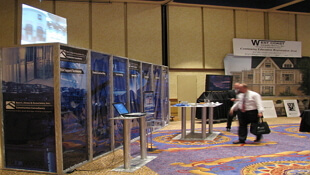
2009-With the success of the rear screen projection, BHA adds additional monitors to provide attendees with more information about BHA.
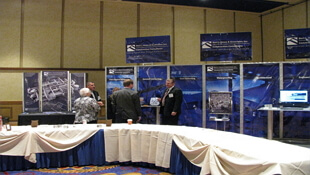
2010-BHA adds an interpretive professional development exhibit targeted to Building Envelope issues allowing adjusters and other non-construction professionals hands on access to the systems and components at the heart of many related such claims.


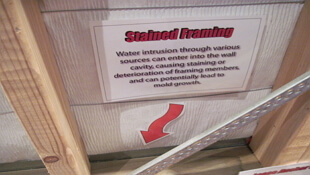
2011-BHA's Swing for Charity challenge is born.

2012-Always innovating, BHA expands its rear projection and professional development offerings to West Coast attendees.

2013-BHA showcases additional capabilities with a twenty-four foot, custom, convex, immersive video experience.

2014-BHA adds an iPhone display to give a hands-on demonstration of their data collection methods.
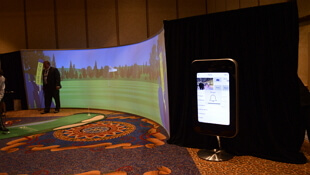
2015-BHA's twenty-four foot , custom, convex, immersive video experience was elevated with two additional rear projection screens, reflecting BHA's newest capabilities and services.

2016-BHA dazzles attendees with their new exhibit comprised of more than 15 integrated, high definition, LCD displays. iPads are stationed on tables to conveniently demonstrate BHA's data collection processes.
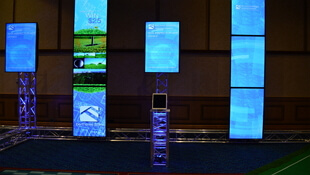
2017-BHA's Swing for Charity Golf Challenge raised $2,225.00 for the National Coalition for Homeless Veterans and $1,900 for Final Salute.
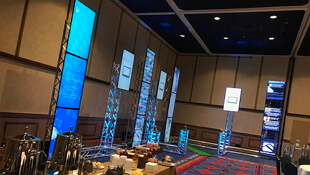
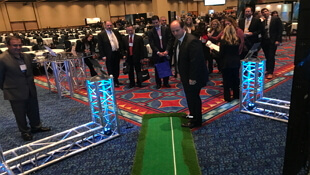
Read the court decisionRead the full story...Reprinted courtesy of
Insurer’s Broad Duty to Defend in Oregon, and the Recent Ruling in State of Oregon v. Pacific Indemnity Company
January 02, 2024 —
Keith Sparks - Ahlers Cressman & Sleight PLLCOregon law mandates a broad duty to defend, requiring insurers to provide legal representation to their policyholders whenever there is a potential for coverage under the policy. The significance of this broad interpretation means that an insurer has a duty to defend an insured even in situations where the alleged facts only imply a covered claim, and even in situations where the underlying claim is ultimately not covered by the policy. The insurer’s duty to defend is triggered if the allegations of the complaint, reasonably interpreted, could result in the insured being held liable for damages covered by the policy. This is referred to as the “four-corners” rule; it is also sometimes referred to as the eight-corners rule (for the four corners of the complaint plus the four corners of the policy). Oregon’s adoption of a broad interpretation of the duty to defend affirmatively places the onus on insurers to err on the side of coverage.
This broad duty to defend is based on the principle that an insured should not have to bear the expense of defending a lawsuit that the insurer may ultimately have to pay for. The duty to defend is also important because it helps ensure that insureds have access to legal representation when faced with a lawsuit.
Read the court decisionRead the full story...Reprinted courtesy of
Keith Sparks, Ahlers Cressman & Sleight PLLCMr. Sparks may be contacted at
keith.sparks@acslawyers.com
The Vallagio HOA Appeals the Decision from the Colorado Court of Appeals
August 04, 2015 —
David M. McLain – Colorado Construction LitigationAs highlighted in our most recent post, the Colorado Court of Appeals’ Vallagio decision upheld a declaration provision that prohibited the amendment of a mandatory arbitration clause without the consent of the developer/declarant. Vallagio at Inverness Residential Condominium Association, Inc. v. Metropolitan Homes, Inc., et al., 2015COA65 (Colo. App. May 7, 2015). This case protects a developer/declarant’s ability to arbitrate construction defect claims with a well-crafted declaration that requires declarant consent in order to amend the mandatory arbitration provisions for construction defect actions.
However, the Vallagio ruling still hangs in the balance while the Colorado Supreme Court considers the condominium association’s petition for certiorari review, filed June 18, 2015. In its petition, the association argues that the declarant consent requirement violates public policy and four separate sections of the Colorado Common Interest Act (“CCIOA”).
For instance, the association argued in the courts below that a declarant consent requirement violates section 217 of CCIOA, which governs unit owners’ voting percentage requirements and provides that declarations may not require more than 67% affirmative vote for amendments. The Court of Appeals rejected this argument, reasoning that other provisions of section 217 contemplate consent requirements by parties other than unit owners, such as first mortgagees.
Read the court decisionRead the full story...Reprinted courtesy of
David M. McLain, Higgins, Hopkins, McLain & Roswell, LLCMr. McLain may be contacted at
mclain@hhmrlaw.com
Water Alone is Not Property Damage under a CGL policy in Connecticut
July 22, 2024 —
Bill Wilson - Construction Law ZoneThe Connecticut Appellate Court recently provided guidance on what does not constitute property damage under a typical contractor’s Commercial General Liability (CGL) insurance policy in Westchester Modular Homes of Fairfield County, Inc. v. Arbella Protection Ins. Co., 224 Conn App. 526 (2024). In this case, the contractor defended construction defect claims brought by an owner and then sued its insurer to recover $500,000 in defense costs for failing to provide a defense under the contractor’s policy. In Connecticut, an insurer is obligated to provide a defense based on what is alleged in a complaint and if it has actual knowledge of any facts establishing a reasonable possibility of coverage. The contractor provided extrinsic evidence for two defects claimed by the owner: (1) windows were installed improperly such that water was collecting and will continue to collect in the window soffit areas and eventually rot the wall, and (2) the vapor barrier was not installed in the second-floor ceiling which will result in water condensation and water damage to the roof structure if not remedied.
The insurer relied on typical provisions included in most CGL policies. The insurer has no duty to defend the insured against any suit seeking damages for property damage to which the insurance does not apply. The term “property damage” is defined as “physical injury to tangible property, including all resulting loss of use of that property.” Under well-established Connecticut law, the phrase “physical injury” unambiguously connotes damage to tangible property, causing an alteration in appearance, shape, color, or some other material dimension. It is also well-established that claims for property damage caused by defective work are covered under a CGL policy but claims for repair of the defective work itself are not. The insurer denied any duty to defend because no coverage was triggered under the liability policy. Both parties moved for summary judgment.
Read the court decisionRead the full story...Reprinted courtesy of
Bill Wilson, Robinson & Cole LLPMr. Wilson may be contacted at
wwilson@rc.com
Claim Against Broker Survives Motion to Dismiss
January 25, 2021 —
Tred R. Eyerly - Insurance Law HawaiiThe insured's complaint against its broker for failure to secure adequate coverage survived a motion to dismiss. Broecker v. Conklin Prop., LLC, 2020 N.Y. App. Div. LEXIS 7399 (Dec. 2, 2020).
Conklin Property, LLC purchased real property and entered into a contract with JJC Contracting, Inc. for construction and renovation of the property. The broker, Total Management Corp. (TMC) was retained by Conklin to secure insurance for the construction phase of the renovation project. During the renovation, an employee of JJC was injured at the property and died. The employee's estate then sued Conklin. US Underwriters, the insurer, disclaimed coverage pursuant to an exclusion for bodily injury to contractors and subcontractors and their workers.
Read the court decisionRead the full story...Reprinted courtesy of
Tred R. Eyerly, Damon Key Leong Kupchak HastertMr. Eyerly may be contacted at
te@hawaiilawyer.com
Coverage Found For Cleanup of Superfund Site Despite Pollution Exclusion
March 05, 2015 —
Tred R. Eyerly – Insurance Law HawaiiThe court determined that the pollution exclusion did not bar defense or indemnity for the insured's obligation to clean up a superfund site. Decker Mfg. Corp. v. The Travelers Indem. Co., 2015 U.S. Dist. LEXIS 12169 (W.D. Mich. Feb. 3, 2015).
From 1966 to 1981, Decker disposed of its waste materials at the township landfill. The landfill was closed in 1981. Decker was insured under a CGL policy for a four year period from January 1, 1973, through January 1, 1977.
After the landfill was closed, the EPA began an investigation which eventually led to a Unilateral Administrative Order in 1995 in which Decker was ordered to remove drums, construct a landfill cap, and monitor groundwater. Decker notified Travelers of the EPA's order on November 14, 1995. Travelers responded that it had no duty to defend or indemnify Decker.
Read the court decisionRead the full story...Reprinted courtesy of
Tred R. Eyerly, Insurance Law HawaiiMr. Eyerly may be contacted at
te@hawaiilawyer.com
CAUTION: Terms of CCP Section 998 Offers to Compromise Must Be Fully Contained in the Offer Itself
May 12, 2016 —
Jesse M. Sullivan & R. Bryan Martin – Haight Brown & Bonesteel LLPIn Sanford v. Rasnick, (Ct. of Appeal, 1st App. Dist., No. A145704) the First Appellate District addressed whether a CCP § 998 Offer to Compromise requiring plaintiff to execute a release and enter into a separate settlement agreement was valid. Because the settlement agreement could potentially contain additional terms not stated in the CCP 998 Offer, the Court of Appeal held that it was not.
Plaintiff alleged he was injured when the 17-year-old Defendant ran a stop sign and struck his motorcycle. Plaintiff sued the 17-year-old and his father (the owner of the vehicle) for vehicular negligence and general negligence.
Just after discovery closed, defendants jointly served a CCP § 998 Offer to Compromise to plaintiff in the amount of $130,000. The offer contained a condition requiring that in order to accept, plaintiff must provide a “notarized execution and transmittal of a written settlement agreement and general release. Each party will bear its own fees, costs and expenses.”
Mr. Sullivan may be contacted at jsullivan@hbblaw.com
Mr. Martin may be contacted at bmartin@hbblaw.com
Reprinted courtesy of
Jesse M. Sullivan, Haight Brown & Bonesteel LLP and
R. Bryan Martin, Haight Brown & Bonesteel LLP
Read the court decisionRead the full story...Reprinted courtesy of




































































